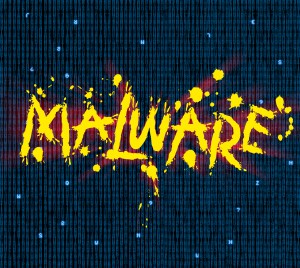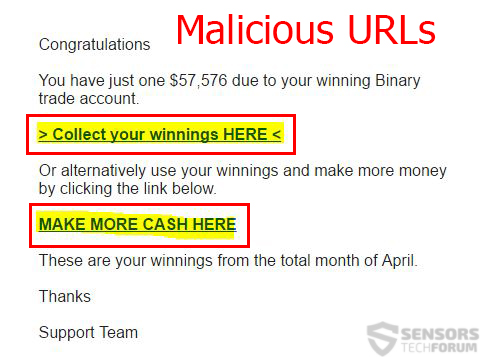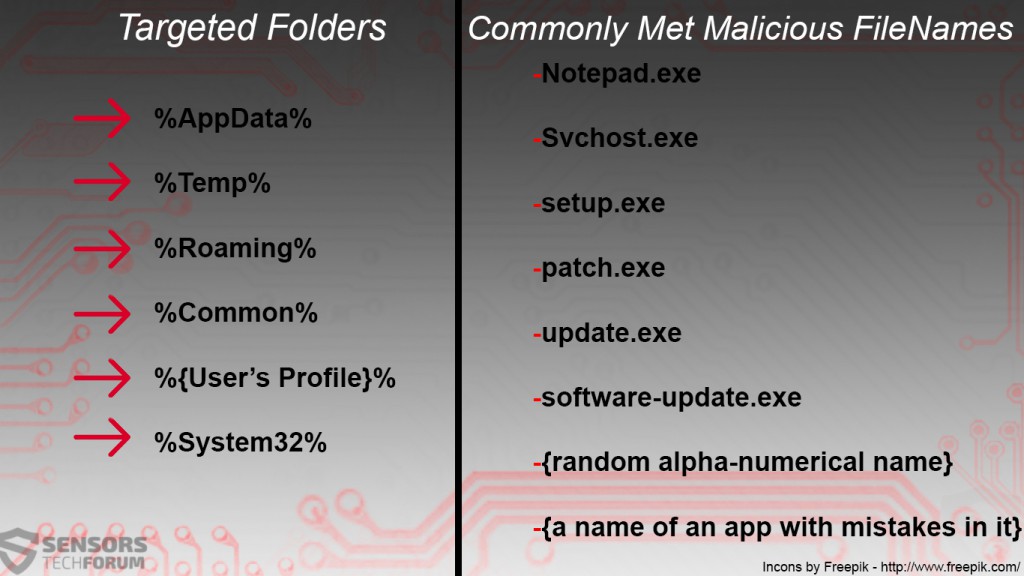 File encryption virus belonging to the id variants has been let loose to infect unsuspecting user. The malware is named JuicyLemon, and it belongs to the “id” ransomware viruses. The cyber-criminals behind JuicyLemon use a strong cipher to encode files on infected computers and for their safe decoding, they demand around 2.5 BTC, which is approximately 1000 euros. The virus uses a 7 number file extension added after every encrypted file which is a custom identification of the infected computer. Even though at the moment direct decryption is impossible we strongly advise users not to pay the ransom and try to restore their files using alternatives like the methods after this article until a decryptor is released.
File encryption virus belonging to the id variants has been let loose to infect unsuspecting user. The malware is named JuicyLemon, and it belongs to the “id” ransomware viruses. The cyber-criminals behind JuicyLemon use a strong cipher to encode files on infected computers and for their safe decoding, they demand around 2.5 BTC, which is approximately 1000 euros. The virus uses a 7 number file extension added after every encrypted file which is a custom identification of the infected computer. Even though at the moment direct decryption is impossible we strongly advise users not to pay the ransom and try to restore their files using alternatives like the methods after this article until a decryptor is released.

Threat Summary
| Name | JuicyLemon |
| Type | Ransomware |
| Short Description | JuicyLemon is a file encoding virus which holds the files of the user as hostage and wants him to pay 1000 euros to get them back. |
| Symptoms | A ransom note with instructions for paying the ransom shows as a “Read me now !.txt” file. |
| Distribution Method | Spam Emails, Email Attachments, File Sharing Networks. |
| Detection Tool |
See If Your System Has Been Affected by malware
Download
Malware Removal Tool
|
| User Experience | Join our forum to Discuss JuicyLemon Ransomware. |
| Data Recovery Tool | Windows Data Recovery by Stellar Phoenix Notice! This product scans your drive sectors to recover lost files and it may not recover 100% of the encrypted files, but only few of them, depending on the situation and whether or not you have reformatted your drive. |

JuicyLemon Ransomware Strategy of Infection
So far, as reports by researchers indicated, JuicyLemon is spread via the notorious and extremely effective Angler Exploit Kit. However, the cyber-criminals behind it may use other methods as well.
To successfully penetrate the defenses of the systems it infects, JuicyLemon may typically act on the same escalated privilege level as the user. Once it obtains this privilege by most likely executing obfuscated processes that slips past any real-time antivirus shields.
However, the trick is to make the user execute the process. Typically for this to happen, JuicyLemon ransomware may use several malicious URLs, that may cause the drive-by download of a .js(JavaScript) file which is automatically executed and drops the payload. Another method of distribution is the widely used nowadays Exploit kits.
All of those may be distributed via spam e-mails featuring the web links along with a message that convinces users to click on them, for example:
Another way of spreading may be on spam posts or comments on social media, like facebook, twitter or another service.
It is also not excluded that the malicious .exe file of the ransomware may be directly downloaded on the user PC by arriving in an archive downloaded from e-mails, suspicious third-party websites, and others.

JuicyLemon Ransomware – Activity
Once its malicious payload is dropped on the infected computer, it may be located in one of the following Windows folders, under the following names, for example:
Typically, JuicyLemon may create registry entries which will allow it to run on Windows startup. This happens by targeting the following Windows registry keys:
→ HKEY_CURRENT_USER\Software\Microsoft\Windows\CurrentVersion\Run
HKEY_CURRENT_USER\Software\Microsoft\Windows\CurrentVersion\RunOnce
HKEY_LOCAL_MACHINE\Software\Microsoft\Windows\CurrentVersion\Run
HKEY_LOCAL_MACHINE\Software\Microsoft\Windows\CurrentVersion\RunOnce
After doing so, the ransomware may delete the shadow volume copies of the infected computer, eliminating any backup if present. This can happen by executing the vssadmin command with one of its parameters, for example:
Pic
JuicyLemon ransomware uses a strong cipher to encrypt the user’s files. It may look for files containing the most widely used file extensions and encode them:
→ “PNG .PSD .PSPIMAGE .TGA .THM .TIF .TIFF .YUV .AI .EPS .PS .SVG .INDD .PCT .PDF .XLR .XLS .XLSX .ACCDB .DB .DBF .MDB .PDB .SQL .APK .APP .BAT .CGI .COM .EXE .GADGET .JAR .PIF .WSF .DEM .GAM .NES .ROM .SAV CAD Files .DWG .DXF GIS Files .GPX .KML .KMZ .ASP .ASPX .CER .CFM .CSR .CSS .HTM .HTML .JS .JSP .PHP .RSS .XHTML. DOC .DOCX .LOG .MSG .ODT .PAGES .RTF .TEX .TXT .WPD .WPS .CSV .DAT .GED .KEY .KEYCHAIN .PPS .PPT .PPTX ..INI .PRF Encoded Files .HQX .MIM .UUE .7Z .CBR .DEB .GZ .PKG .RAR .RPM .SITX .TAR.GZ .ZIP .ZIPX .BIN .CUE .DMG .ISO .MDF .TOAST .VCD SDF .TAR .TAX2014 .TAX2015 .VCF .XML Audio Files .AIF .IFF .M3U .M4A .MID .MP3 .MPA .WAV .WMA Video Files .3G2 .3GP .ASF .AVI .FLV .M4V .MOV .MP4 .MPG .RM .SRT .SWF .VOB .WMV 3D .3DM .3DS .MAX .OBJ R.BMP .DDS .GIF .JPG ..CRX .PLUGIN .FNT .FON .OTF .TTF .CAB .CPL .CUR .DESKTHEMEPACK .DLL .DMP .DRV .ICNS .ICO .LNK .SYS .CFG” Source: Fileinfo.com
After the encryption process is complete, JuicyLemon may delete itself to prevent malware analysis. It leaves the encrypted files with a file extension containing unique number, the letters “id”, along with an e-mail address, and a bitcoin payment address, for example:
→ New Text Document.txt.1926452847_email1_support@juicylemon.biz_email2_provectus@protonmail.com_BitMessage_BM-NBRCUPTenKgYbLVCAfeVUHVsHFK6Ue2F
Before deletion the ransomware may send different information, such as the decryption key for the encoded files to its remote server, reported by Bleeping Computer researchers to be the following:
→ Beginbegone(.)com/777/index.php
It also drops a text, file called Read me now !.txt ,which contains the following ransom note:
→ “Hello! We inform you that all, absolutely all of your files are encrypted!
But do not despair. Decryption is not possible without our help, our help is not free and costs a certain amount of money.
To begin the process of recovery your files you need to write us an email, attaching an example of an encrypted file.
– Our contacts for communication:
– Primary email: support@juicylemon.biz
– Additional email: provectus@protonmail.com
– Bitmessage: BM-NBRCUPTenKgYbLVCAfeVUHVsHFK6Ue2F
How To Use Bitmessage see https://youtu.be/ndqIffqCMaM
We encourage you to contact us for all three contacts!
– Very important:
Do not try to decrypt files by third-party decoders otherwise you will spoil files !
Be adequate in dealing with us and we will solve your problem.”
When the e-mail of the cyber-criminals has been used to contact them, they may reply with the following message:
→ “Hello! The cost of the decoder for you is 1000 (€) Euro in bitcoins, for a guarantee of existence the recovery program at us you can send the test file for decoding, after decoding of the test file we will send you requisites for payment of the decoder, and after payment the instruction on decoding and the decoder.”

Removing JuicyLemon Ransomware Completely and Restoring .id Encrypted Files
To be effective in the removal process of JuicyLemon Ransomware, we advise following the removal instructions which are provided for your below. In case you are having difficulties in manually discovering and deleting JuicyLemon, experts recommend using an advanced anti-malware tool to automatically find and remove the objects created by the ransomware on your computer.
After the ransomware is removed, you still have to cope with the encrypted files. We have provided below few universal tools and solutions, such as data recovery software which has helped several users restore multiple files encoded by JuicyLemon ransomware, according to reports at Bleeping Computer. However, we advise to also try the other methods, especially the Kaspersky Decryption software solutions.
Learn More about AES-128 Encryption
The Locky ransomware is known to encrypt file locations which usually contain documents, such as:
- C:\Users\[UserName]\Documents
- Desktop\MyDocs\Downloads
- C:\Documents and Settings\Users\My Documents
For now, it is not known if Shadow Volume Copies are erased from the Windows operating system, but it is likely. So, after removing the ransomware, you should check the third section of the instructions written below for a few ways which can help you try to restore your files.

Remove Locky Ransomware and Restore .locky Encrypted Files
If you have been infected by Locky, you should have a bit of experience in removing malware. This ransomware could lock your files irreparably, so it is highly recommended that you act fast and follow the step-by-step instructions provided down here.
- Step 1
- Step 2
- Step 3
- Step 4
- Step 5
Step 1: Scan for JuicyLemon with SpyHunter Anti-Malware Tool



Ransomware Automatic Removal - Video Guide
Step 2: Uninstall JuicyLemon and related malware from Windows
Here is a method in few easy steps that should be able to uninstall most programs. No matter if you are using Windows 10, 8, 7, Vista or XP, those steps will get the job done. Dragging the program or its folder to the recycle bin can be a very bad decision. If you do that, bits and pieces of the program are left behind, and that can lead to unstable work of your PC, errors with the file type associations and other unpleasant activities. The proper way to get a program off your computer is to Uninstall it. To do that:


 Follow the instructions above and you will successfully delete most unwanted and malicious programs.
Follow the instructions above and you will successfully delete most unwanted and malicious programs.
Step 3: Clean any registries, created by JuicyLemon on your computer.
The usually targeted registries of Windows machines are the following:
- HKEY_LOCAL_MACHINE\Software\Microsoft\Windows\CurrentVersion\Run
- HKEY_CURRENT_USER\Software\Microsoft\Windows\CurrentVersion\Run
- HKEY_LOCAL_MACHINE\Software\Microsoft\Windows\CurrentVersion\RunOnce
- HKEY_CURRENT_USER\Software\Microsoft\Windows\CurrentVersion\RunOnce
You can access them by opening the Windows registry editor and deleting any values, created by JuicyLemon there. This can happen by following the steps underneath:


 Tip: To find a virus-created value, you can right-click on it and click "Modify" to see which file it is set to run. If this is the virus file location, remove the value.
Tip: To find a virus-created value, you can right-click on it and click "Modify" to see which file it is set to run. If this is the virus file location, remove the value.
Before starting "Step 4", please boot back into Normal mode, in case you are currently in Safe Mode.
This will enable you to install and use SpyHunter 5 successfully.
Step 4: Boot Your PC In Safe Mode to isolate and remove JuicyLemon





Step 5: Try to Restore Files Encrypted by JuicyLemon.
Method 1: Use STOP Decrypter by Emsisoft.
Not all variants of this ransomware can be decrypted for free, but we have added the decryptor used by researchers that is often updated with the variants which become eventually decrypted. You can try and decrypt your files using the instructions below, but if they do not work, then unfortunately your variant of the ransomware virus is not decryptable.
Follow the instructions below to use the Emsisoft decrypter and decrypt your files for free. You can download the Emsisoft decryption tool linked here and then follow the steps provided below:
1 Right-click on the decrypter and click on Run as Administrator as shown below:

2. Agree with the license terms:

3. Click on "Add Folder" and then add the folders where you want files decrypted as shown underneath:

4. Click on "Decrypt" and wait for your files to be decoded.

Note: Credit for the decryptor goes to Emsisoft researchers who have made the breakthrough with this virus.
Method 2: Use data recovery software
Ransomware infections and JuicyLemon aim to encrypt your files using an encryption algorithm which may be very difficult to decrypt. This is why we have suggested a data recovery method that may help you go around direct decryption and try to restore your files. Bear in mind that this method may not be 100% effective but may also help you a little or a lot in different situations.
Simply click on the link and on the website menus on the top, choose Data Recovery - Data Recovery Wizard for Windows or Mac (depending on your OS), and then download and run the tool.
JuicyLemon-FAQ
What is JuicyLemon Ransomware?
JuicyLemon is a ransomware infection - the malicious software that enters your computer silently and blocks either access to the computer itself or encrypt your files.
Many ransomware viruses use sophisticated encryption algorithms to make your files inaccessible. The goal of ransomware infections is to demand that you pay a ransom payment to get access to your files back.
What Does JuicyLemon Ransomware Do?
Ransomware in general is a malicious software that is designed to block access to your computer or files until a ransom is paid.
Ransomware viruses can also damage your system, corrupt data and delete files, resulting in the permanent loss of important files.
How Does JuicyLemon Infect?
Via several ways.JuicyLemon Ransomware infects computers by being sent via phishing emails, containing virus attachment. This attachment is usually masked as an important document, like an invoice, bank document or even a plane ticket and it looks very convincing to users.
Another way you may become a victim of JuicyLemon is if you download a fake installer, crack or patch from a low reputation website or if you click on a virus link. Many users report getting a ransomware infection by downloading torrents.
How to Open .JuicyLemon files?
You can't without a decryptor. At this point, the .JuicyLemon files are encrypted. You can only open them once they are decrypted using a specific decryption key for the particular algorithm.
What to Do If a Decryptor Does Not Work?
Do not panic, and backup the files. If a decryptor did not decrypt your .JuicyLemon files successfully, then do not despair, because this virus is still new.
Can I Restore ".JuicyLemon" Files?
Yes, sometimes files can be restored. We have suggested several file recovery methods that could work if you want to restore .JuicyLemon files.
These methods are in no way 100% guaranteed that you will be able to get your files back. But if you have a backup, your chances of success are much greater.
How To Get Rid of JuicyLemon Virus?
The safest way and the most efficient one for the removal of this ransomware infection is the use a professional anti-malware program.
It will scan for and locate JuicyLemon ransomware and then remove it without causing any additional harm to your important .JuicyLemon files.
Can I Report Ransomware to Authorities?
In case your computer got infected with a ransomware infection, you can report it to the local Police departments. It can help authorities worldwide track and determine the perpetrators behind the virus that has infected your computer.
Below, we have prepared a list with government websites, where you can file a report in case you are a victim of a cybercrime:
Cyber-security authorities, responsible for handling ransomware attack reports in different regions all over the world:
Germany - Offizielles Portal der deutschen Polizei
United States - IC3 Internet Crime Complaint Centre
United Kingdom - Action Fraud Police
France - Ministère de l'Intérieur
Italy - Polizia Di Stato
Spain - Policía Nacional
Netherlands - Politie
Poland - Policja
Portugal - Polícia Judiciária
Greece - Cyber Crime Unit (Hellenic Police)
India - Mumbai Police - CyberCrime Investigation Cell
Australia - Australian High Tech Crime Center
Reports may be responded to in different timeframes, depending on your local authorities.
Can You Stop Ransomware from Encrypting Your Files?
Yes, you can prevent ransomware. The best way to do this is to ensure your computer system is updated with the latest security patches, use a reputable anti-malware program and firewall, backup your important files frequently, and avoid clicking on malicious links or downloading unknown files.
Can JuicyLemon Ransomware Steal Your Data?
Yes, in most cases ransomware will steal your information. It is a form of malware that steals data from a user's computer, encrypts it, and then demands a ransom in order to decrypt it.
In many cases, the malware authors or attackers will threaten to delete the data or publish it online unless the ransom is paid.
Can Ransomware Infect WiFi?
Yes, ransomware can infect WiFi networks, as malicious actors can use it to gain control of the network, steal confidential data, and lock out users. If a ransomware attack is successful, it could lead to a loss of service and/or data, and in some cases, financial losses.
Should I Pay Ransomware?
No, you should not pay ransomware extortionists. Paying them only encourages criminals and does not guarantee that the files or data will be restored. The better approach is to have a secure backup of important data and be vigilant about security in the first place.
What Happens If I Don't Pay Ransom?
If you don't pay the ransom, the hackers may still have access to your computer, data, or files and may continue to threaten to expose or delete them, or even use them to commit cybercrimes. In some cases, they may even continue to demand additional ransom payments.
Can a Ransomware Attack Be Detected?
Yes, ransomware can be detected. Anti-malware software and other advanced security tools can detect ransomware and alert the user when it is present on a machine.
It is important to stay up-to-date on the latest security measures and to keep security software updated to ensure ransomware can be detected and prevented.
Do Ransomware Criminals Get Caught?
Yes, ransomware criminals do get caught. Law enforcement agencies, such as the FBI, Interpol and others have been successful in tracking down and prosecuting ransomware criminals in the US and other countries. As ransomware threats continue to increase, so does the enforcement activity.
About the JuicyLemon Research
The content we publish on SensorsTechForum.com, this JuicyLemon how-to removal guide included, is the outcome of extensive research, hard work and our team’s devotion to help you remove the specific malware and restore your encrypted files.
How did we conduct the research on this ransomware?
Our research is based on an independent investigation. We are in contact with independent security researchers, and as such, we receive daily updates on the latest malware and ransomware definitions.
Furthermore, the research behind the JuicyLemon ransomware threat is backed with VirusTotal and the NoMoreRansom project.
To better understand the ransomware threat, please refer to the following articles which provide knowledgeable details.
As a site that has been dedicated to providing free removal instructions for ransomware and malware since 2014, SensorsTechForum’s recommendation is to only pay attention to trustworthy sources.
How to recognize trustworthy sources:
- Always check "About Us" web page.
- Profile of the content creator.
- Make sure that real people are behind the site and not fake names and profiles.
- Verify Facebook, LinkedIn and Twitter personal profiles.















